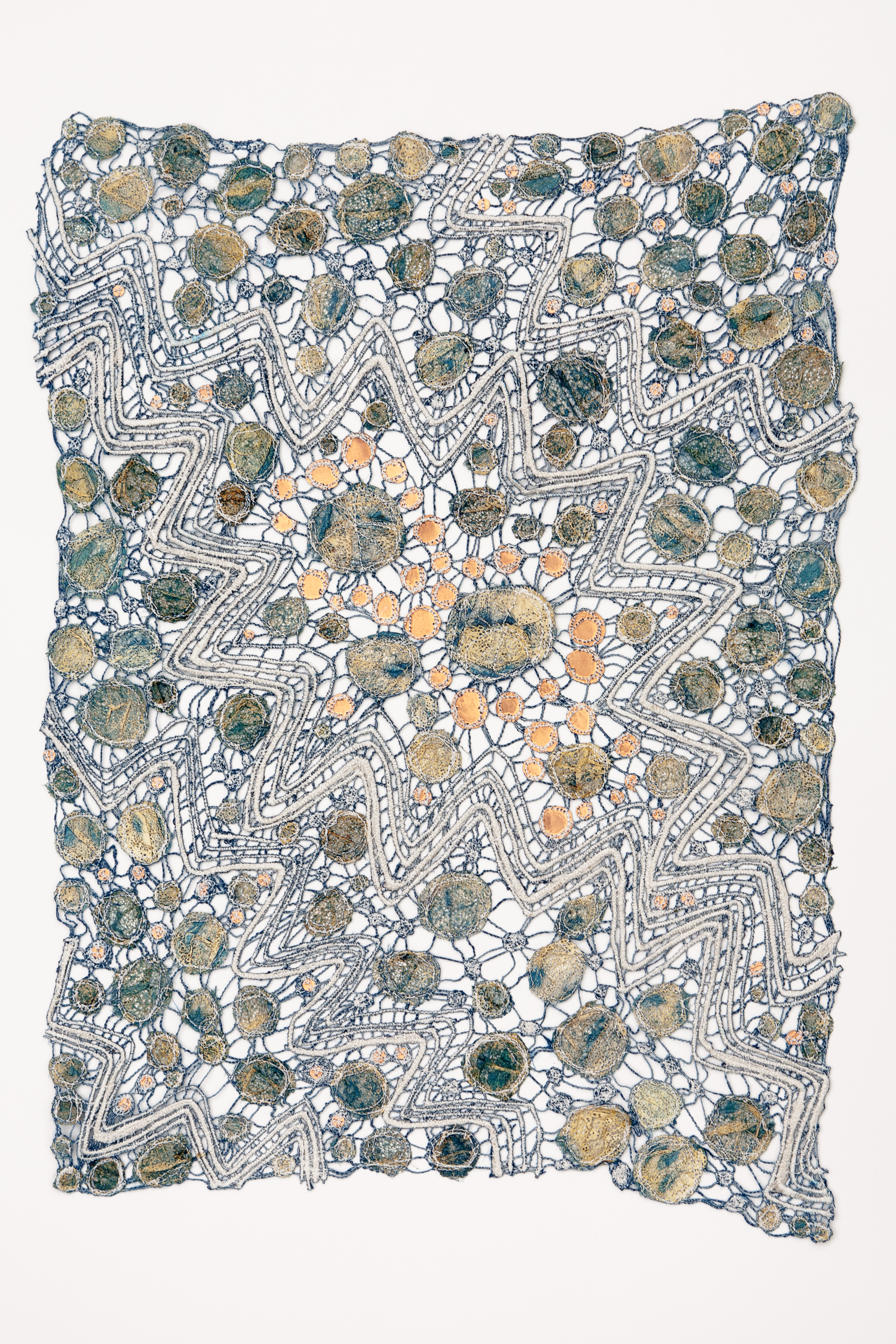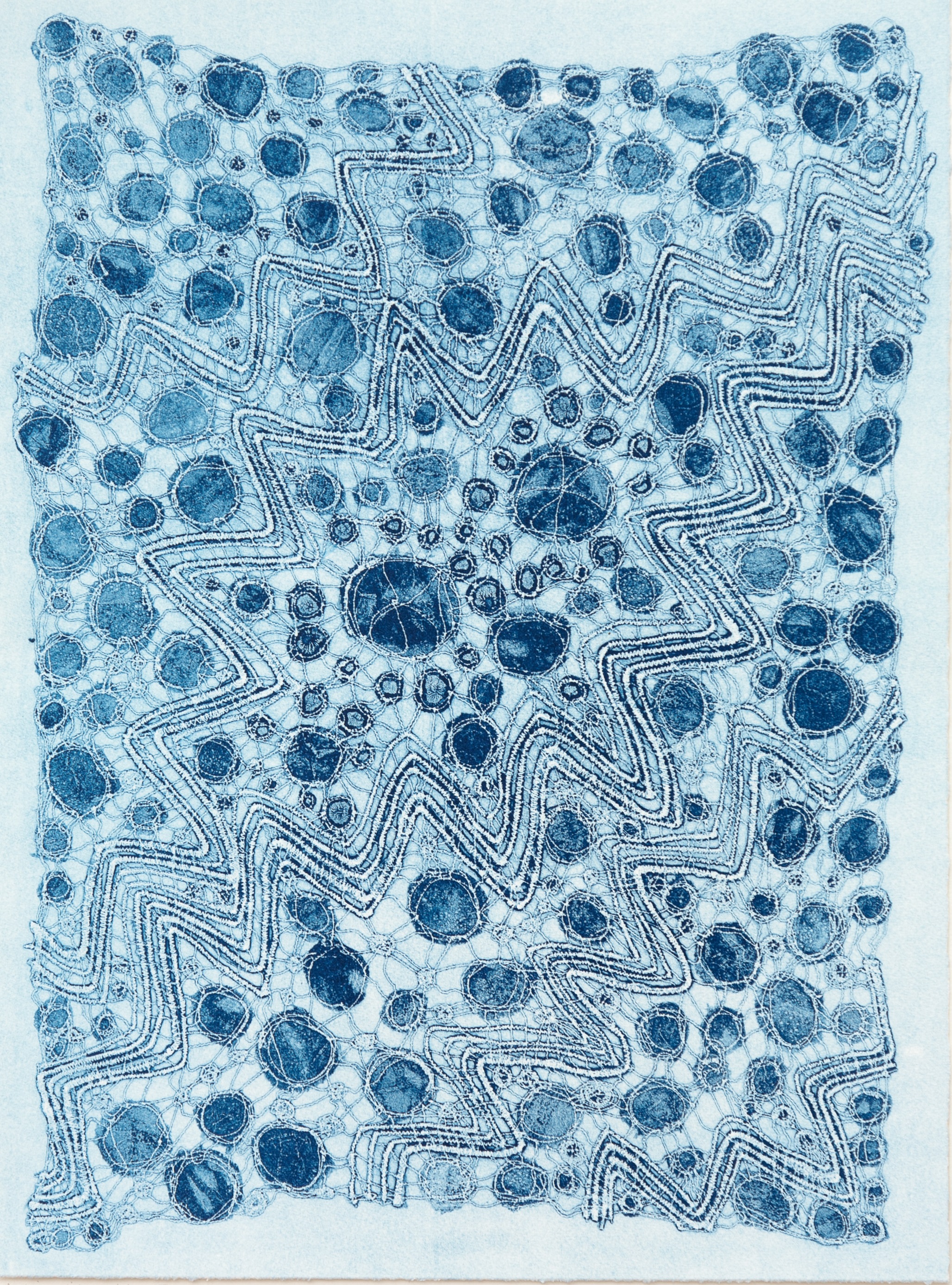Threads of Life
Exploring and celebrating the structural diversity of proteins through embroidery and printing
5 October to 23 December 2015, exhibition opening Thursday 8 October from 6-8pm
Jenny Langley has a degree in Chemistry and gained a diploma in embroidery in 2005. Using textiles as a creative medium, her scientific past surfaces in her textile art. She has had solo exhibitions around the country and worked with seven museums to create bespoke tactile story mats as an educational resource, the latest one being for the Polar Museum in Cambridge.
This exhibition has developed from the artist’s interest in chemistry, in particular proteins. It is a celebration of their structural diversity and the crucial roles they play in building our bodies and enabling the chemical reactions that keep us all alive. The exhibition has developed slowly over time and contains pieces using different textile techniques including taking collograph prints directly from embroideries. Many of the pieces are made from silk and wool; proteins themselves. On show for the first time are felted vessels exploring the hidden, protected and precious nature of the active sites of enzymes.
Jenny will give a guided tour of her exhibition for the Festival of Ideas on Tuesday 20 October 2015 at 6pm.
Although I have worked for many years as a textile artist, in a former life I was a synthetic organic chemist, and occasionally my scientific past surfaces. Working on a theme of ‘connections’, I thought of chemical bonds. After further consideration I decided to concentrate on proteins and was excited by the artistic possibilities of their extraordinary structures. It was also a chance to tell people about the crucial roles they play in building our bodies and enabling the chemical reactions which keep us alive (the unsung heroes of the molecular world).
I hope that you can recognise elements of protein structure. The sawtooth lines refer to the ‘backbones’ of a protein with its tetrahedral bonding of carbon and to the structure of B-pleated sheets. Strong covalent bonds are suggested by thicker lines, whereas thinner lines represent the weaker hydrogen bonds which guide the larger structure of the molecule and form connections between the strands of structural proteins. Hopefully you will also see hints of helices, U-bends, random structures and protein strands.
The 2-D textiles in this exhibition were created by free machine embroidery on water soluble plastic. They are made entirely from silk with the addition of a little metal shim to represent the metallic ions found in ‘active sites’. The silk cocoons are naturally a golden colour and are made by a silk moth from Indonesia. The porous nature of the cocoons seemed suggestive of atoms.
Many of the pieces are collagraph prints created using the original textile to carry an image onto paper with the help of a printing press. This process pleases me as an analogue of the way an enzyme works, with the active site ‘imprinting’ a mirror-image of its structure onto the substrate through a momentary, ephemeral contact. Collagraphy is completely new to me, and I’ve relished the exploration and experimentation.
My present work is extending my ideas into felted vessels surrounding a precious element, representing the hidden and protected nature of a protein’s active-site. This is the first time that these vessels will have been on display.
In my research, I have felt astounded by the sheer beauty and variety of proteins, all made from a few amino acids. Proteins are truly incredible compounds and I have felt privileged to find out just a little about them.



